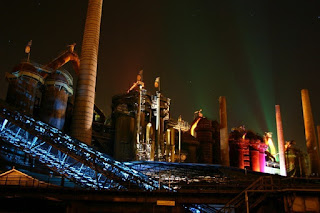Exactly
what is all the fuss with LED?
LED street lighting has taken
the market by storm, lots of traditional styles of lighting including halogen
and compact fluorescent have become obsolete. This is since these older designs
are not energy reliable and produce a great deal of heat. Consumers wish to
relocate an energy conscious way and stay away from the old and move into the
new.
ADVANTAGES
OF USING LED
LED Lighting is the most recent kind
of lighting offered, it is not only surpassing existing technology designs it
is making them outdated. LED Lighting offers instant light with colour
variations and dimmable capabilities.
1
ENERGY EFFICIENT
LEDs are the most energy-efficient
light on the marketplace, they use 85% LESS than halogen globes. They only utilise 15% to power a light that is equivalent
to the brightness of halogens. Lower power usage and for that reason less
greenhouse emission-- you are doing your bit for international warming.
2
PRODUCE LITTLE TO NO HEAT
You do not need heat sinks or heat
mitts, LEDs produce 80% less heat so they are cool to touch and feel, they do
still produce some heat, nevertheless, their inbuilt heat dispensing system
implies that this heat escapes keeping the light cool.
3
GLOBE COLOUR OPTIONS
You have the choice in world colour,
there are 3 main colour selections warm white, cool white and daytime!
4
LONG LIFESPAN
The typical life expectancy of an LED fitting is around 25,000 hours minimum.
This means it lasts 10 times longer than halogen or incandescent
globes.
5
FAST SWITCHING
Can be turned on and off regularly
without delay-- unlike compact fluorescent lighting which lags when starting
versus led which turns on right away.
6
SAFETY FIRST
LED is safe to use and has no
hazardous impacts for customers, unlike CFL which includes mercury this can be
exceptionally harmful when broken.
7
VERSATILE
LED can be utilised anywhere and everywhere
in heavy industrial lighting, LED is available in a variety of world bases,
along with fitting types this means that any existing worlds or fittings can be
switched to LED alternatives.




